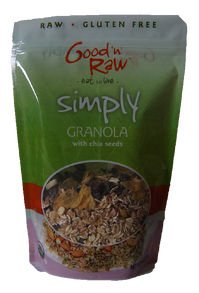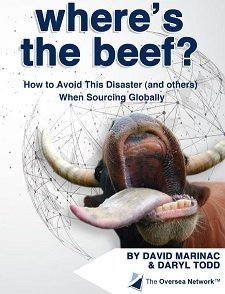 Consumers sometimes take a while to accept certain products. Take granola, for example. What was once widely derided as "fruits and nuts" eaten only by tree huggers and hippies is now a staple of many an American breakfast, valued for its range of choices, nutritional value and, yes, even its taste. Of course, with wider acceptance comes greater demand and, as is often the case, with greater demand comes increased competition. The shelves of both grocery and health food stores now offer several, if not many, choices, making it difficult for the uncommitted consumer to make a purchasing decision, or at least difficult to pick your brand out from those of your competitors. As leaders in cereal and granola packaging, we know how important your product package is to you. Did you know it's no less important to consumers?
Consumers sometimes take a while to accept certain products. Take granola, for example. What was once widely derided as "fruits and nuts" eaten only by tree huggers and hippies is now a staple of many an American breakfast, valued for its range of choices, nutritional value and, yes, even its taste. Of course, with wider acceptance comes greater demand and, as is often the case, with greater demand comes increased competition. The shelves of both grocery and health food stores now offer several, if not many, choices, making it difficult for the uncommitted consumer to make a purchasing decision, or at least difficult to pick your brand out from those of your competitors. As leaders in cereal and granola packaging, we know how important your product package is to you. Did you know it's no less important to consumers?
Of course, when we talk about granola and cereal packaging, most people automatically assume we're talking about a box or carton, an assumption that isn't necessarily helpful if you're interested in making the best packaging decision for your brand. In our title we make reference to thinking "outside the box". As it turns out, it's not just the turn of a phrase, we mean it literally. There is an excellent alternative to granola in a box: Flexible barrier bags for granola.
What exactly are flexible barrier bags for granola? We're glad you asked. It's the general name given to a type of granola and cereal packaging that is crafted from multiple layers of specially designed film laminated together to create a container that is strong, durable, and puncture resistant. It protects contents from vapor, odor, moisture, pests, air, and UV light. Barrier bags for granola come in various forms, among them:
- Stand up pouches
- Flat barrier bags
- Flexible box bags
- Flat bottom stand up bags
- Spouted stand up bags
- Unique "Odd Ball" Styles
Great, you say, there is a variety of choice, but is that the only thing that makes this a good alternative to box granola packaging? Not even close, as it turns out. Here's why:
Boxes are, well, boxy. Inflexible, they are not always easy to store and take up the exact same amount of space, regardless of how full or empty. Flexible barrier bags for granola are just that - flexible. It conforms to whatever space is available and actually requires less and less space the emptier it gets.
Box granola and cereal packaging isn't very strong, especially if it gets wet from a kitchen counter or because of the inevitable milk spill. In addition, a granola box requires an inner liner or bag, either foil, plastic, or wax paper based, in order to protect the contents from vapor, odor, moisture, pests, extra air, and UV light.
Flexible barrier bags for granola, on the other hand, are strong, durable, and puncture-resistant. Laminating together multiple layers of scientifically formulated film yields a barrier that not only keeps unwanted things out; it does so without the need for additional inner or outer packaging. Not only is this convenient, it eliminates the costs normally spent and energy necessarily consumed in the production, transportation, storage and shipping of extra packaging because there simply isn't any.
And did you know that flexible barrier bags for granola are an excellent marketing tool? It's true, and here's why:
- The barrier panels are ideal for custom printing (in up to 12 colors) or company labels, or both
- With the option of clear, metalized film or even foil, you have greater latitude in packaging design and how it looks on the shelf
- Because round and sombrero-shaped hang holes are available, grocers have an alternate way to display your brand, thereby increasing the likelihood that it will stand apart from your competitors.
- Available with spouts and caps along with unique shapes and designs are other merchandising options for this type of flexible granola and cereal packaging.
In closing, granola and cereal packaging has evolved from the traditional boxes and folding cartons to much more “flexible” alternatives. Barrier bags for granola will protect your product so you can ship with confidence. So, rather than being boxed in by your packaging choice, shouldn't you consider being flexible? We think so.






